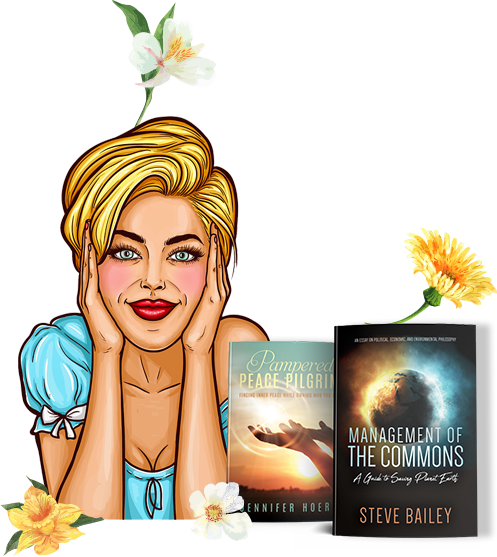
Writing a nonfiction book proposal is a crucial step if you’re aiming to publish traditionally. Unlike fiction, where authors often submit a completed manuscript, nonfiction books are usually sold based on a compelling proposal. This means you need to sell your idea before the book even exists. A proposal not only communicates your concept and qualifications but also demonstrates that your book has a strong market and commercial potential. In this comprehensive guide, you’ll learn how to write an outstanding nonfiction book proposal with detailed insights, expert tips, and key suggestions to polish your final submission.
Table of Contents
ToggleWhat Is a Nonfiction Book Proposal?
A nonfiction book proposal is a strategic, persuasive document that outlines your book’s purpose, structure, audience, and marketability. Publishers use this proposal to determine whether your book is worth investing in. Think of it as a business plan that showcases your concept, writing style, expertise, and promotional capabilities. It typically includes several essential components that demonstrate your preparedness and professionalism.
Why Is a Book Proposal Important?
The nonfiction book proposal is your opportunity to present yourself not just as a writer, but as a knowledgeable expert with a viable product. Publishers and agents want to know that:
- Your book fills a gap in the market
- You have the authority to write it
- There’s a clear audience that will buy it
- You’re capable of helping promote it
Writing a strong proposal can increase your chances of getting a book deal, gaining an agent, and starting your publishing journey with confidence.
Essential Elements of a Nonfiction Book Proposal
Let’s walk through the detailed sections every strong nonfiction book proposal should include:
1. Title Page
Your proposal starts with a clean and professional title page. It should include:
- Your book title and subtitle (even if tentative)
- Your name and contact information
- Date of submission
Keep this page simple and businesslike, free from stylized fonts or colors.
2. Overview
The overview is the heart of your proposal. It should grab attention while clearly summarizing the content and goal of your book. In 1–3 pages, answer the following:
- What is your book about?
- What problem does it solve or story does it tell?
- Why is this book timely and important?
- What inspired you to write it?
Think of the overview as a powerful sales pitch that conveys the essence of your book, its emotional core, and its relevance in today’s market.
3. Target Audience
Define exactly who your book is for. This section helps publishers assess market size and reader interest. Be specific:
- Age, gender, profession, interests
- Emotional or practical needs your book addresses
- Habits or challenges they face
- Why this audience would pay for your book
Use real-life statistics or examples where possible. For instance, if your book is about managing anxiety, include data about the number of adults seeking mental health resources.
4. Author Bio
Your author bio is where you demonstrate your qualifications. You don’t need to be a celebrity or Ph.D., but you do need to show credibility. Highlight:
- Professional background and education
- Personal experience related to the book topic
- Prior publications, blogs, speaking engagements
- Your media presence, email list, or online following
Keep this section concise but impactful. Show why you are the right person to write this book.
5. Market Analysis
The market analysis explains why your book will succeed commercially. Publishers want proof that there’s demand. Include:
- Real-world trends or statistics that support interest in your topic
- Market gaps your book fills
- Cultural, social, or technological shifts that make your topic timely
Use credible sources and focus on evidence-based reasoning, not assumptions.
6. Competitive and Comparative Titles
This section shows you’ve done your homework and know the landscape. Identify 4–6 existing books that are similar to yours. For each:
- List the title, author, and publication year
- Summarize what the book covers
- Explain how your book is different or better
- Highlight what’s missing in those books that yours offers
Avoid speaking negatively about other books—focus on what your unique perspective adds.
7. Marketing and Promotion Plan
This is one of the most important sections. Publishers expect authors to help market their books. Include:
- Your existing platform (followers, blog readers, podcast listeners)
- Email list size and open rate
- Speaking engagements or workshops
- Social media strategies (ads, campaigns, influencer outreach)
- Traditional media outreach (TV, radio, articles, interviews)
- Community or professional network support
Even if your platform is small, emphasize effort and potential. Show you’re proactive, not passive.
8. Chapter Outline or Table of Contents
Provide a chapter-by-chapter breakdown of your book. Each entry should include:
- Chapter title
- A 1–2 paragraph summary explaining the chapter’s main content
- Key themes or takeaways
- Any special features (interviews, case studies, exercises, charts)
This demonstrates your book’s flow and structure. Make sure the logic is clear and sequential.
9. Sample Chapters
Most publishers want at least two sample chapters—typically the introduction and a representative chapter from the main body. These samples should:
- Showcase your writing style and voice
- Be fully edited and polished
- Demonstrate your authority and clarity
- Reflect the tone, format, and quality of the full book
Consider hiring professional editing or proofreading services for this step. A well-crafted sample chapter can make or break your proposal.
10. Appendices (Optional)
You may include additional supporting materials, such as:
- Research references or case studies
- Interview transcripts
- Graphs, tables, or images (if essential to your book concept)
- Endorsements or advance praise (if already secured)
Only include appendices if they add value or provide crucial supporting information.
Expert Tips to Strengthen Your Proposal
Write with the Reader in Mind
Your proposal should be focused on how the book will benefit the reader. Avoid centering the entire narrative around your personal experience unless it’s essential to the topic.
Show, Don’t Just Tell
Use examples, data, and real stories to back up your claims. Publishers are more persuaded by evidence than emotion.
Be Strategic with Language
Use persuasive yet professional language. Avoid filler words, and aim for clarity. Ensure each section leads logically to the next.
Hire Professional Help
If you’re serious about landing a deal, consider working with:
- Editors: To refine your sample chapters
- Proofreaders: To catch grammatical and formatting errors
- Publishing consultants: To review your proposal before submission
Even the best ideas can be overlooked if the proposal isn’t well presented.
Revise, Review, Repeat
Your first draft shouldn’t be your last. Give yourself time to revise multiple times. Ask trusted readers or mentors for feedback, and don’t rush to submit.
Editing, Proofreading, and Professional Touches
Never underestimate the value of a well-edited proposal. Whether you hire a professional or do it yourself, your proposal must be:
- Free of typos and grammatical errors
- Professionally formatted and structured
- Written with consistency in tone and voice
- Aligned with publishing industry standards
Hiring professional proofreaders and editors can give your proposal the final polish it needs to stand out in a competitive market.
Final Thoughts
A nonfiction book proposal isn’t just about selling an idea—it’s about showing a publisher why you and your book are worth investing in. By including all the essential components and approaching the process with professionalism, research, and authenticity, you create a compelling case for publication. With the right structure, clarity, and expert polish, your proposal becomes more than a document—it becomes the bridge to your publishing future. Take your time, stay focused, and don’t hesitate to seek professional input where needed. The effort you invest now can pay off in a book deal tomorrow.
FAQs
- Do I need a complete manuscript to submit a nonfiction book proposal?
No, most nonfiction proposals are submitted before the full book is written. - How long should a book proposal be?
Typically between 25–50 pages, including sample chapters. - Can I submit my proposal to multiple agents at once?
Yes, simultaneous submissions are standard, but always check their guidelines. - Should I include images or design elements in my proposal?
Only if they are essential to the book’s concept or structure. - Is it necessary to hire an editor or proofreader for a proposal?
It’s highly recommended to ensure your proposal is polished and professional.





